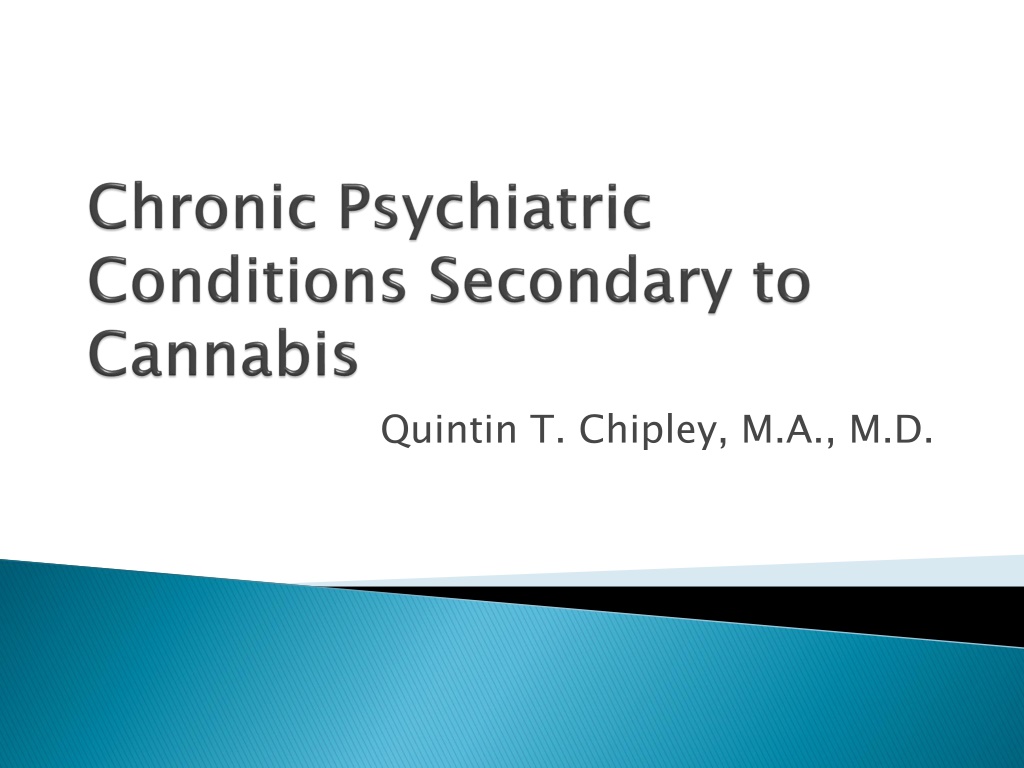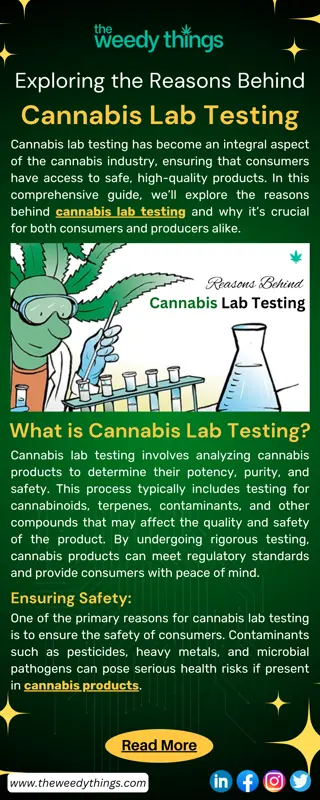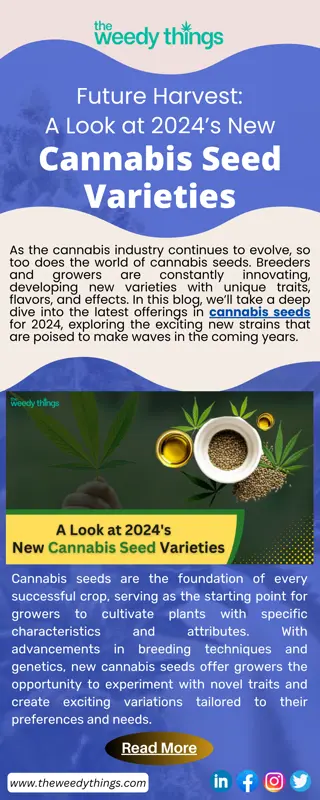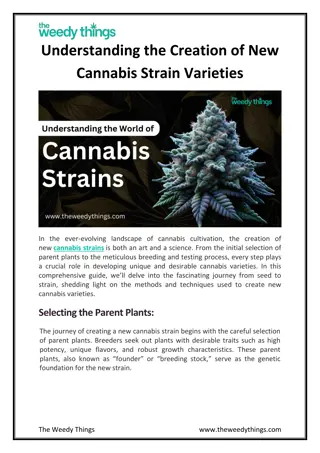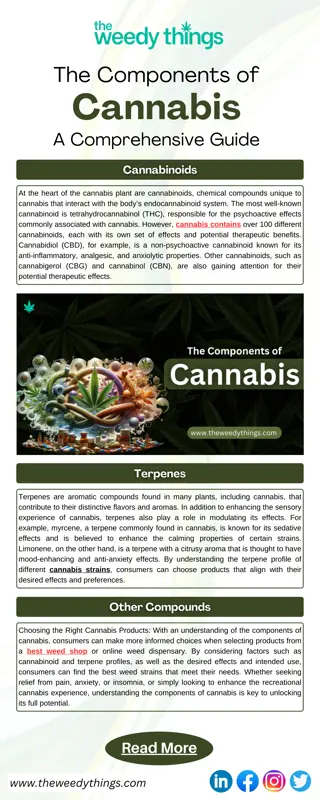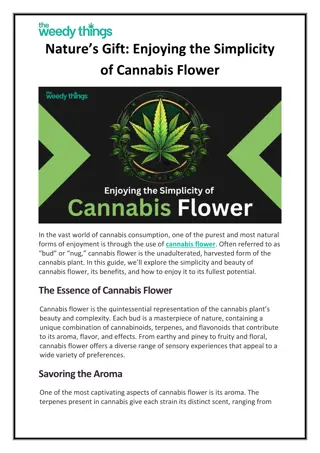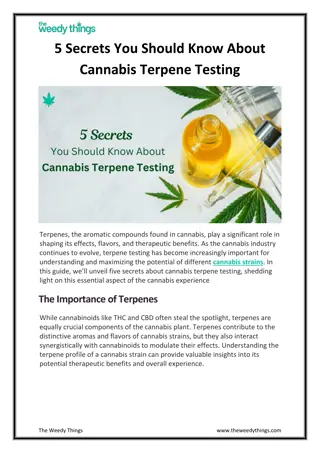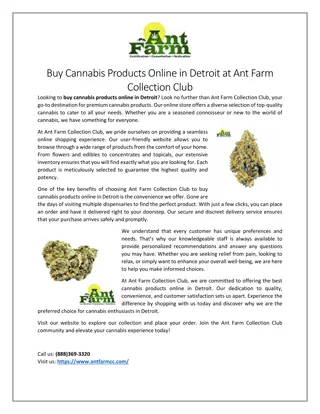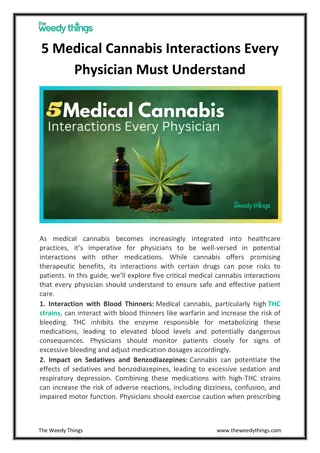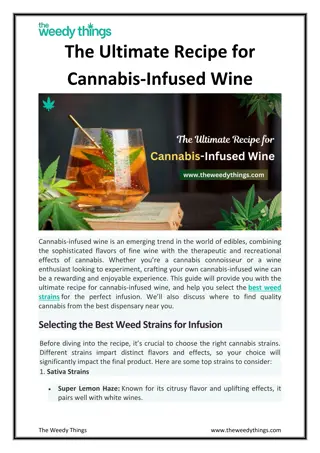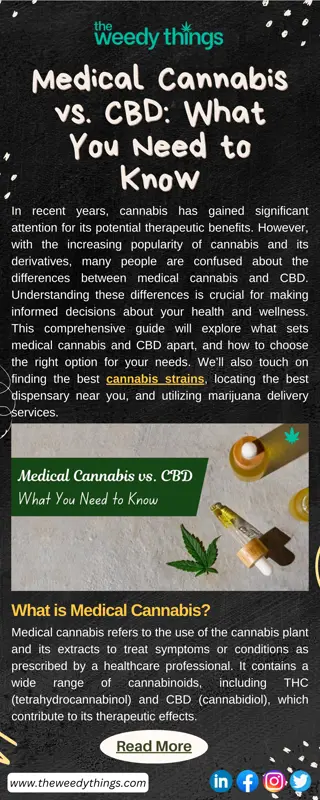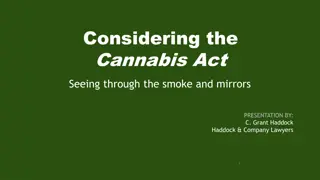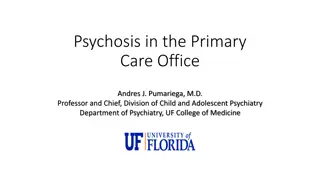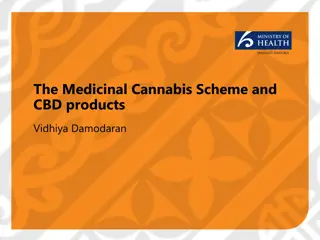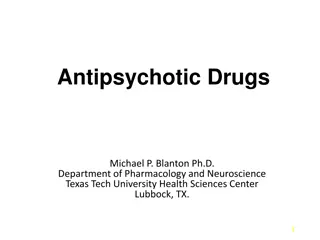Understanding Psychotic Disorders and Cannabis Effects
Quintin T. Chipley, M.A., M.D., discusses the impact of cannabis on psychotic disorders, highlighting studies linking cannabis use to increased risk of psychosis. The presentation delves into the dose-dependent and age-dependent effects, the role of THC and Cannabidiol in mind-altering experiences, and their dose-response curves. Emphasizing the importance of recognizing the potential risks associated with cannabis use, especially among individuals predisposed to mental health conditions.
Download Presentation

Please find below an Image/Link to download the presentation.
The content on the website is provided AS IS for your information and personal use only. It may not be sold, licensed, or shared on other websites without obtaining consent from the author. Download presentation by click this link. If you encounter any issues during the download, it is possible that the publisher has removed the file from their server.
E N D
Presentation Transcript
This presenter has no funding from any institution, corporation, or agency regarding the content of this presentation. This presenter has no funding from any institution, corporation, or agency regarding the content of this presentation. Although he loves his work at the University of Louisville as the Counseling Coordinator for the Health Sciences Center students, that institution should in no way be held responsible for the content of this presentation. Although he loves his work at the University of Louisville as the Counseling Coordinator for the Health Sciences Center students, that institution should in no way be held responsible for the content of this presentation.
Then JAMA Psychiatry (Formerly The Archives of General Psychiatry) published an article in February, 2011that corroborated the material. http://archpsyc.jamanetwork.com/article.aspx? articleid=211301 Of course, their article had been written, reviewed, and approved long before it saw print, but we have some bragging rights here:
CAPTASA scooped JAMA!
Increase Psychotic Disorders, even among people without a genetic predisposition: One study indicates an extra 1 in 1400 people will develop chronic psychosis. The intereaction effect with a genetic predisposition becomes much larger Depressive and anxiety disorders are probably even more prevalent and with greater social and financial burden
Dose dependent Age dependent: the younger the abuser, the greater the risk
D9-THC here Cannabidiol here
THC is the active agent in the mind expanding hallucinatory-type experiences. These include distortions in perception of time an space. (A metabolite produce in the liver may also be responsible for increased heart rate, anxiety. a.k.a sympathomemetic.) Cannabidiol produces sedation and even reduces distortions
D9-THC dose-response curve keeps on rising: The greater the dose, the greater the response Cannabidiol has a dose-response curve that tends to flatten out: after a certain plasma level is reach, an increase in plasma level does not create more effect
In Cannabis sativa the ratio of D9-THC: Cannabidiol is high even before horticultural selection In Cannabis indica the ratio of D9 THC : Cannabidiol is not nearly as high
By the time we consider individual differences in human physiology (liver function: acytelation and cytochrome p450 actions), differences in genetic predispositions for psychotic, mood, and anxiety disorders, and differences in relative concentrations of the major psychoactive components of Cannabis as acquired on the streets and in pharmacies we are looking at a crap-shoot regarding the outcome.
If you remember, it did not take long for major tobacco companies to learn how to use post-harvest chemistry (essentially free- basing tobacco) to make the nicotine more bioavailable , rendering the product more popular. How long do you think it will be before research shows a way to close the ring in Cannabidiol so that it becomes D9-THC?
D9-THC here Cannabidiol here
Obviously, substance use abstinence is first Should an anti-psychotic medication be used in the presentation of psychosis secondary to Cannabis use? Frankly, there is not enough evidence based material in the literature to say. If you follow the theory-based notion that the longer a person stays in a psychotic state, the more permanent is the neuronal architecture change, then aggressive treatment is warranted. But anti-psychotic meds have considerable risks.
Bhattacharyya S, Fusar-Poli P, Borgwardt S, Martin-Santos R, Nosarti C, O'Carroll C, Allen P, Seal ML, Fletcher PC, Crippa JA, Giampietro V, Mechelli A, Atakan Z, McGuire P. Modulation of mediotemporal and ventrostriatal function in humans by Delta9-tetrahydrocannabinol: a neural basis for the effects of Cannabis sativa on learning and psychosis. Arch Gen Psychiatry. 2009 Apr;66(4):442-51. PMID: 19349314 Bhattacharyya S, Morrison PD, Fusar-Poli P, Martin-Santos R, Borgwardt S, Winton-Brown T, Nosarti C, O' Carroll CM, Seal M, Allen P, Mehta MA, Stone JM, Tunstall N, Giampietro V, Kapur S, Murray RM, Zuardi AW, Crippa JA, Atakan Z, McGuire PK. Opposite effects of delta-9-tetrahydrocannabinol and cannabidiol on human brain function and psychopathology. Neuropsychopharmacology. 2010 Feb;35(3):764- 74. PMID: 19924114 Bossong MG, Niesink RJ. Adolescent brain maturation, the endogenous cannabinoid system and the neurobiology of cannabis-induced schizophrenia. Prog Neurobiol. 2010 Jul 15. PMID: 20624444 Di Forti M, Morgan C, Dazzan P, Pariante C, Mondelli V, Marques TR, Handley R, Luzi S, Russo M, Paparelli A, Butt A, Stilo SA, Wiffen B, Powell J, Murray RM. High- potency cannabis and the risk of psychosis. Br J Psychiatry. 2009 Dec;195(6):488- 91. PMID: 19949195
Hickman M, Vickerman P, Macleod J, Lewis G, Zammit S, Kirkbride J, Jones P. If cannabis caused schizophrenia--how many cannabis users may need to be prevented in order to prevent one case of schizophrenia? England and Wales calculations. Addiction. 2009 Nov;104(11):1856-61. PMID: 19832786 Large, Matthew, Swapnil Sharma, Michael T. Compton,Tim Slade, Olav Nielssen, M Crim, Archives of Geneneral Psychiatry (now JAMA Psychiatry). 2011;68(6):555-561. doi:10.1001/archgenpsychiatry.2011.5 Mahajan SD, Aalinkeel R, Sykes DE, Reynolds JL, Bindukumar B, Adal A, Qi M, TohJ, Xu G, Prasad PN, Schwartz SA. Methamphetamine alters blood brain barrier permeability via the modulation of tight junction expression: Implication for HIV-1 neuropathogenesis in the context of drug abuse. Brain Res. 2008 Apr 8;1203:133-48. PMID: 18329007 Malone DT, Jongejan D, Taylor DA. Cannabidiol reverses the reduction in social interaction produced by low dose Delta(9)-tetrahydrocannabinol in rats. PMID: 19393686 Morgan CJ, Freeman TP, Schafer GL, Curran HV. Cannabidiol attenuates the appetitive effects of Delta 9-tetrahydrocannabinol in humans smoking their chosen cannabis. Neuropsychopharmacology. 2010 Aug;35(9):1879-85. PMID: 20428110
Mller H, Sperling W, Khrmann M, Huttner HB, Kornhuber J, Maler JM. The synthetic cannabinoid Spice as a trigger for an acute exacerbation of cannabis induced recurrent psychotic episodes. Schizophr Res. 2010 May;118(1-3):309-10. PMID: 20056392 Pierre JM. Psychosis associated with medical marijuana: risk vs. benefits of medicinal cannabis use. Am J Psychiatry. 2010 May;167(5):598-9. PMID: 20439399
